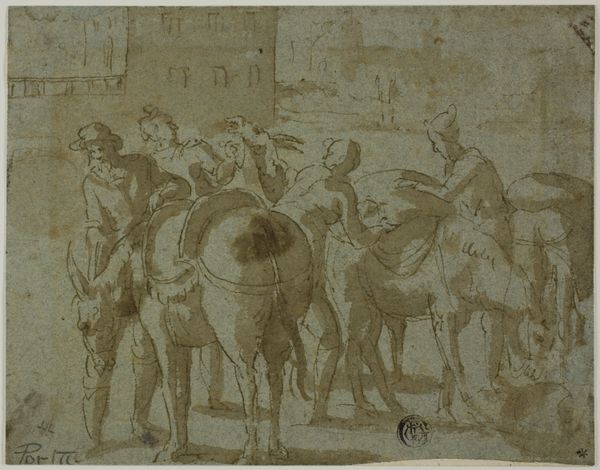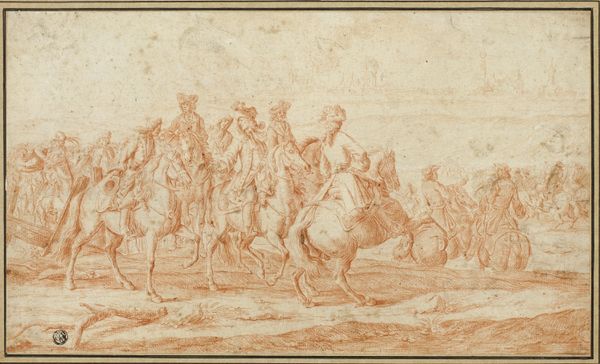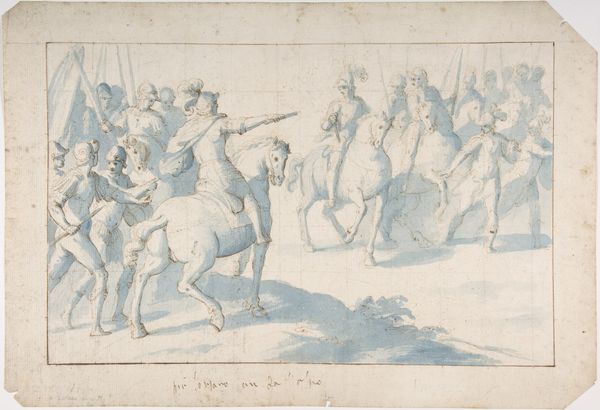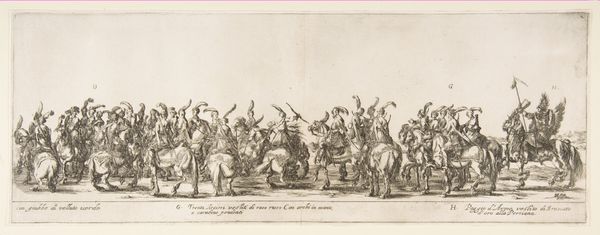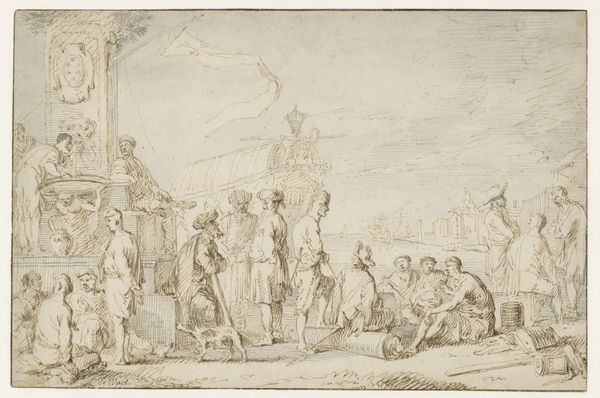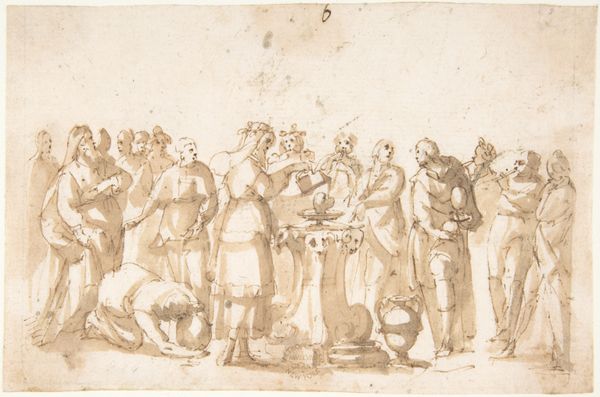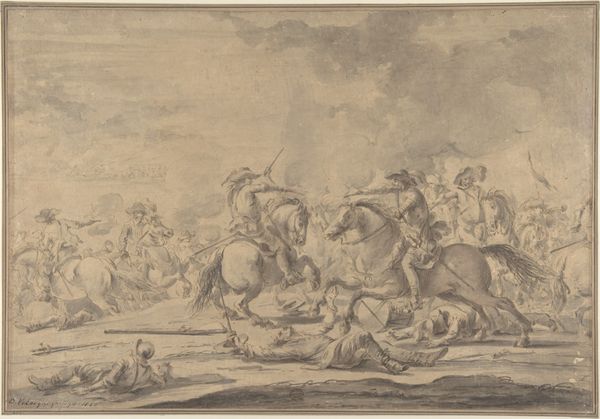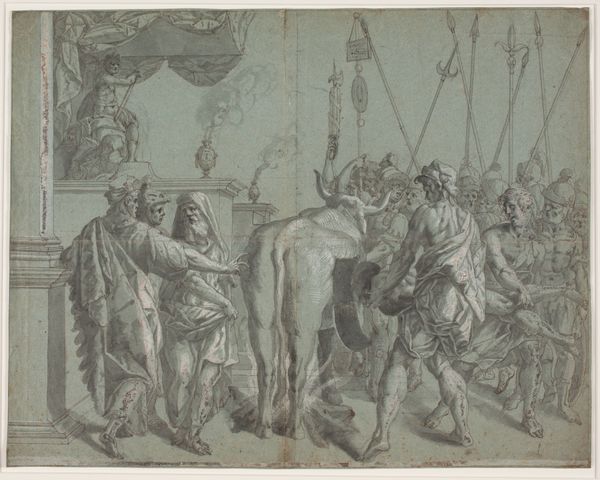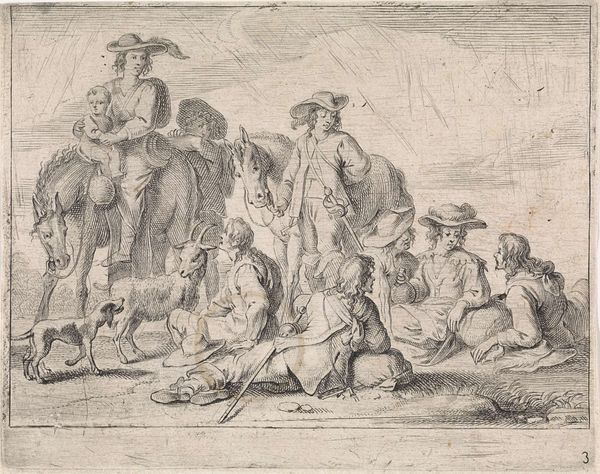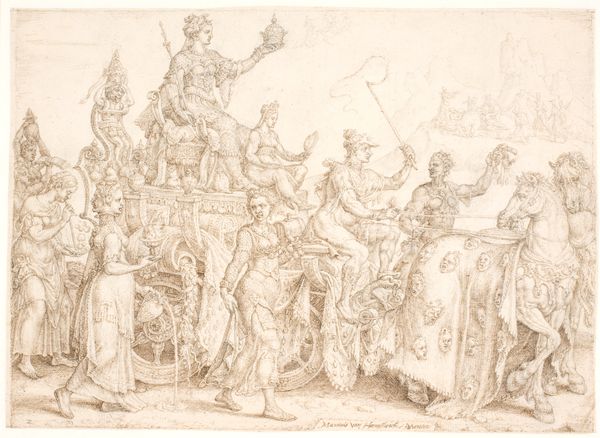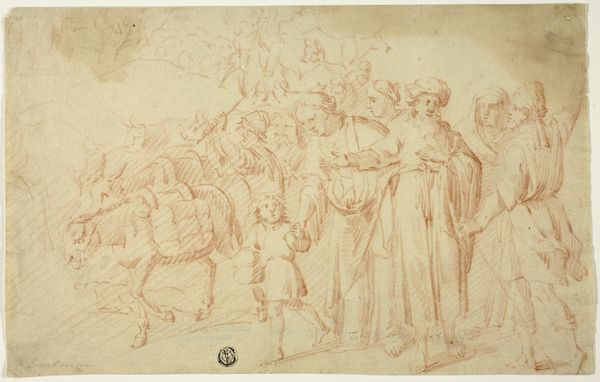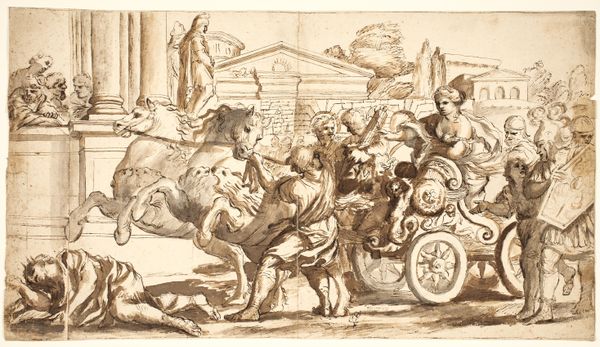
drawing, ink
#
drawing
#
narrative-art
#
baroque
#
ink painting
#
charcoal drawing
#
figuration
#
ink
#
history-painting
Dimensions: 3-1/8 x 4-1/2 in. (7.9 x 11.4 cm)
Copyright: Public Domain
Editor: We’re looking at Francesco Allegrini’s "Group of Horsemen," created between 1624 and 1663, using ink. It's a flurry of activity, everyone seems to be looking in different directions, almost chaotic, and yet… regal. How do you interpret this work? Curator: I see this drawing as a lens through which we can examine the construction of power and performance in the Baroque era. Note the theatricality of the scene. How might these displays of horsemanship and military bearing serve to reinforce the socio-political hierarchy of the time? Who are these figures and what stories are being represented through the symbols displayed in the scene? Editor: That’s interesting. It’s easy to see the display, but thinking about what it’s meant to *do* is different. Is that why some figures look almost…caricatured? Curator: Precisely! The exaggerated poses and attire point to the performative aspect of nobility. Think about how class and gender intersect here. How might this performance differ depending on one's position in society? What might be absent from this scene? Consider the stories untold, the perspectives unrepresented. Editor: So it's not just about who's in the picture, but who isn't? I was so caught up in the surface of it, I completely missed that deeper context. Curator: Art offers us opportunities to engage in critical dialogue. It invites us to challenge dominant narratives and expose inequalities embedded in the history itself. How can this artwork provoke new interpretations related to today's issues, such as authority and identity? Editor: I definitely have a lot more to think about regarding art’s relationship to power and whose stories are amplified through artmaking. Thanks for broadening my view! Curator: My pleasure! It’s crucial that we see how past representations can mirror present-day structures and behaviors.
Comments
No comments
Be the first to comment and join the conversation on the ultimate creative platform.
